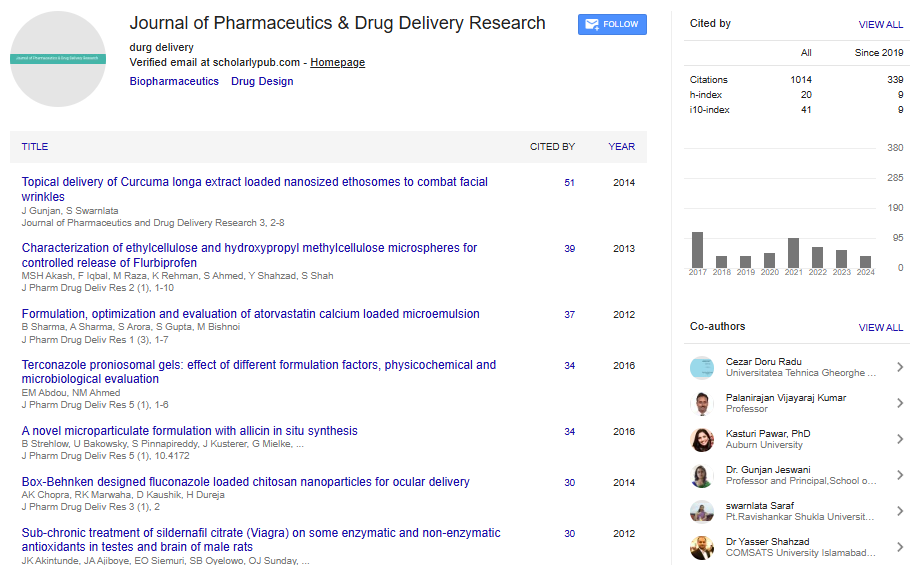Targeting of glioblastoma with multivalent of anti-CD44 antibody-paclitaxel glycoside liposomes
Apriliana Cahya Khayrani, Tomonari Kasai, Hafizah Mahmud, Tsukasa Shigehiro, Arun Vaidyanath, Aung Ko Ko Oo and Masaharu Seno
Okayama University, Japan
: J Pharm Drug Deliv Res
Abstract
Statement of the Problem: Glioblastomas (GBM) are the most common primary malignant neoplasm in the adult brain and lethal primary brain tumor. Even though extensive research and recent advances are there in treatment strategies, patient prognosis for GBM remains poor. Therefore, brain cancer treatment is still one of the biggest challenges in oncology. Liposomal drug delivery is one of the innovative and efficient solutions for cancer treatment due to the specific targeting potential and enhanced therapeutic efficacy of the drug by minimizing side effect on normal cells. Paclitaxel (PTX), a microtubule stabilizing agent, which induces apoptosis in a p53 independent mechanism, appears conceivable to treat glioblastoma. Recently, we have demonstrated paclitaxel glycoside (gPTX), synthesized by the addition of a glucose moiety to PTX with reduced hydrophobicity, has the advantage for efficient encapsulation into liposomes. CD44 is a major cell surface receptor of hyaluronan, one of extracellular matrix component (ECM). The up-regulation of CD44 expression in cancer cells is attributed to enhanced cell adhesion, cell migration, and metastasis of cancer cells. Previously, we and several others showed the overexpression of CD44 in glioblastoma cells. Therefore, CD44 is considered a promising candidate for glioblastoma therapy. Methodology & Theoretical Orientation: Anti-CD44 antibody-mediated liposomal nanoparticle drug delivery system loaded with gPTX is designed to specifically target the CD44-positive glioblastoma cells by inhibiting cell cycle and further triggering apoptosis. gPTX was encapsulated into liposome (gPTX-Liposome) by gradient method which we developed earlier. Anti-human CD44 monoclonal antibody (anti-hCD44 MAb) was prepared from hybridoma cells were multivalently displayed on the gPTX-Liposome. Conclusion & Significance: The encapsulated gPTX exhibited higher cytotoxicity towards glioblastoma cells than free gPTX.
Biography
Apriliana Cahya Khayrani is pursuing her PhD degree in Lab Nano- Biotechnology, Division of Biomedical Engineering, Graduate School of Natural Science and Technology, Okayama University, Japan. She developed interest on Biomedical Science since her Bachelor’s degree (Food Science and Technology) focusing on food for specified health use. She decided to follow her interest by conducting research on drug delivery system in cancer cells.
Email: apriliana41@gmail.com
 Spanish
Spanish  Chinese
Chinese  Russian
Russian  German
German  French
French  Japanese
Japanese  Portuguese
Portuguese  Hindi
Hindi 
